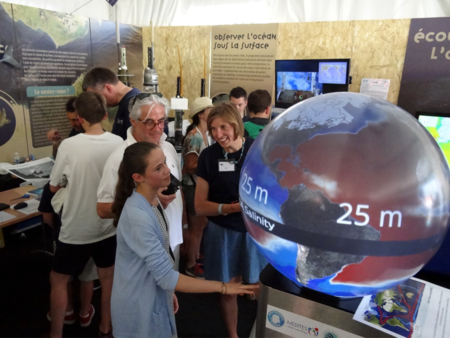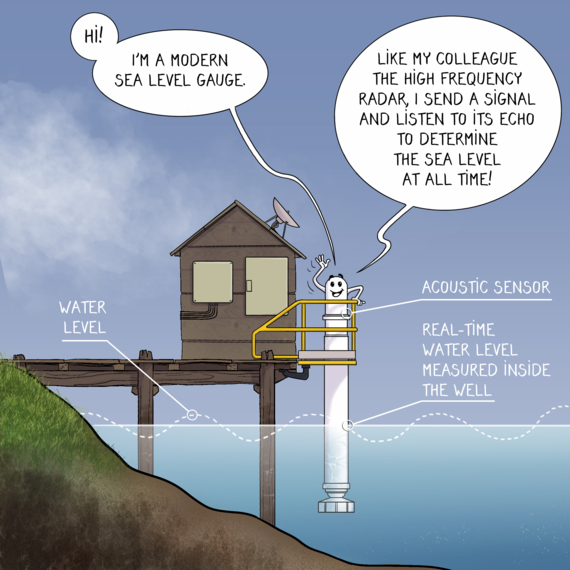Sea level gauges - GLOSS
What is a sea level gauge?
A sea level gauge measures the height of water at a specific point. The gauges discussed here are part of the Global Sea Level Observing System (GLOSS). They can have different shapes.
How does it work?
In the past, sea level was measured with floats. There would be a benchmark on land to compare the sea level to and thus get a measure of sea level relative to land.
To be part of the GLOSS network, sea level gauges are now required to use radar technology. Radar waves are sent to the surface of the sea. The signal is reflected on the water and this back-and-forth allows for the measurement of sea level.
Radar is an acronym for radio detection and ranging. It is a system that uses radio signals for finding the exact position of something.
What kind of ocean observations are collected?
Sea level
What are the observations helping with?
Here are some examples of how the information gathered can be used.
Operational services
In extreme weather events, like storm surges, sea level observations help issue flood warnings and provide coastal protection, as well as tsunami monitoring.
In daily life, it provides tide tables for port operations, fishermen, and recreation.
Sea level records also contribute to defining datums for national or state boundaries.
Climate change
The sea level gauges monitor sea level rise, a key element of climate change.
The information is also used for research into ocean circulation, which impacts the sea surface height, coastal upwelling, and circulation inside specific places, such as straits.
An upwelling occurs when deep, cold waters rise to the surface along a coastal shore.
Where can we find it?
There are about 300 gauges distributed worldwide.
GLOSS sea level gauges key numbers
- Number of stations: 290
- Number of countries involved: 90
- GLOSS starting year : 1985
Learn more about the Global Sea Level Observing System
The Global Sea Level Observing System (GLOSS) is an international sea level monitoring program. Established in 1985 by the Intergovernmental Oceanographic Commission (IOC) of UNESCO, it currently has 90 member nations worldwide. It was created to provide high-quality in situ sea level observations and compile them into databases accessible to operational and research users.
If you want to learn more about this program, visit the GLOSS website.





